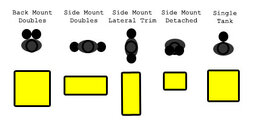Thanks for the info. I am moving away form NJ but I will return for business. I will make sure to plan enough time to do some training in the area when I am ready.
As far as your questions about skills. I only have 24 dives to date (+3 discovery dives but I don't count those) I practice my bouyancy and kicks constantly and I watch tons of videos online to help reinforce the ideas.
I can keep my bouyancy within a 5' window when concentrating. I think when task loaded I may get out of the window. I know once I had an ascent of about 10ft or so when using a compass. That shocked me and caused me to really focus my bouyancy a lot more. I know I need to get more experience so that bouyancy and depth control using my lungs is more second nature to me.
For kicks. I use the frog kick a lot. I prefer it over the flutter kick. I have tried the modified flutter kick on occasion. I need to get some more time in the water to work on the helicopter and reverse. Usually when I go to Dutch with my regular buddy we dive until we hit our turn around PSI then head back to the platforms. There I practice my kicks while maintaining bouyancy back and forth along the platforms until we hit our psi to ascend. During my AOW course my instructor was very impressed with my bouyancy control and mentioned that if I wasn't moving away they would want me to keep going into their divemaster program.
For this season I am done with official training. I am going to dive as long into the winter as I can and get more experience. Then in early spring I will do rescue diver and begin looking into a wreck course for early next year.
Thanks for the advice. I was starting to see from the PADI course materials that they may be a little too casual for the type of diving I wanted to do and rather than stay on their path it might be time to look for training form other sources.
FYI, A lot of what I teach is actually from my Tec background (Full Cave, Trimix, Rebreathers). If it works on a Tec level then it does on a Rec level. Three quarters of what I teach is not even covered in materials, still say it is worth the trip to discuss, you wont's be disappointed .....Guaranteed, My Wreck Class (Core Skills) will be your most challenging class to date.





